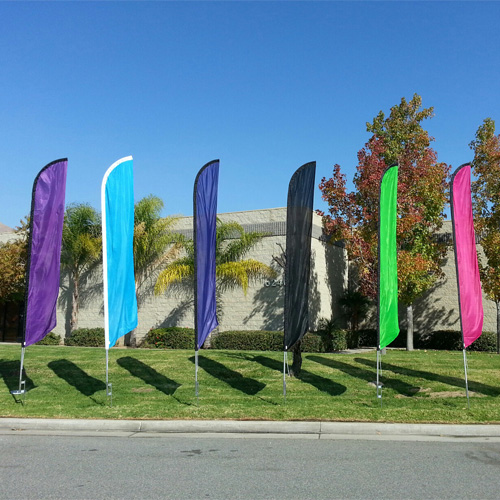The Most Eye-Catching Flag Colors
The choices of flag colors can greatly impact their visibility and attractiveness. Eye-catching colors can draw attention, convey messages effectively, and make a flag stand out in various settings. Consider the emotional impact of colors. Bright colors tend to evoke strong emotional responses and grab people’s attention on a subconscious level. For example, red can convey excitement and urgency.
Green is often used as a flag color to represent nature, growth, and hope. It can be eye-catching, especially when used in combination with other vibrant colors such as red, orange, blue, and yellow. Yellow is a bright and attention-grabbing color. It is often associated with sunlight, happiness, and prosperity. Flags that prominently feature yellow can be quite eye-catching.
Orange is a bold and vibrant color. It can symbolize energy, enthusiasm, and determination. Orange as a flag color can stand out due to their brightness. While not a color in the traditional sense, white is often used as a background or in combination with other colors in flags. It symbolizes purity, peace, and neutrality. When paired with bold colors, white can make a flag eye-catching. Black is less commonly used as a primary color in flags but can be eye-catching when combined with the bright colors like orange, yellow, light green. It often represents strength, determination, and sometimes mourning or remembrance.
Red is a popular flag color and is often associated with courage, sacrifice, and valor. It can be very eye-catching, especially when paired with contrasting colors like white or yellow. Red also signals the mind to stop and look. Blue is another commonly used flag color and is often associated with peace, stability, and freedom. It can be particularly striking when combined with white or gold. Blue is one the colors that help bring a sense of calmness.
Purple is a less common color in flags but is often associated with royalty, nobility, and power. Flags that incorporate purple can stand out due to its uniqueness. Some flags use a combination of several eye-catching colors, creating a colorful and visually appealing design. Examples include the rainbow flag, which represents LGBTQ+ pride, and the Pan-African flag, with its red, black, and green stripes.
Choose your flag colors wisely.
Consider what colors your competitors are using. While you want your flag to stand out, it’s also important not to clash with nearby signage or flags from other businesses. If your business is surrounded by open green fields, consider using colors that complement the natural green of the grass. Complementary colors, like blue or purple, can create a visually pleasing contrast with the green backdrop. If you’re shop is in the dessert, use bright and contrasting colors like red, yellow, and blue can work well in a desert environment.
If you need to request some flag color swatches, please click here. RGB and HEX colors are not accepted. Pantones are welcomed but we do not recommend blues that are high in magenta because they will come out purple instead of blue.
Click here to read more about color codes.
Pastel colors are not recommended because they fade quickly. Our double-sided feather flags will allow you to use different colors on each side. You will not be able to see the color of the other side on a double-sided feather flag.
Ensure that your chosen colors provide sufficient contrast to make the text or graphics on the flag easily readable. Consider what colors your competitors are using. While you want your flag to stand out, it’s also important not to clash with nearby signage or flags from other businesses. Click here to see our solid color flags selection
CYMK for our flag colors.
When it comes to choosing flag colors for your design recommend using CMYK codes. CMYK stands for Cyan, Magenta, Yellow, and Key (black). It is a color model used in color printing, typically in the printing industry, to create a wide range of colors by mixing these four primary ink colors. CMYK is the standard color model for color printing, as opposed to the RGB (Red, Green, Blue) color model, which is used for electronic displays such as computer monitors and television screens.
Cyan is a blue-green color. In CMYK, cyan is used as one of the primary ink colors. When cyan ink is applied to paper or other printing surfaces, it subtracts red from white light, making it appear cyan. Magenta is a pinkish-red color. In CMYK, magenta is another primary ink color. When magenta ink is applied, it subtracts green from white light, making it appear magenta.
Yellow is a primary color in the CMYK model. It subtracts blue from white light when applied in printing, resulting in a yellow appearance. The “K” in CMYK stands for “Key,” which originally referred to the black printing plate used in traditional printing. Black is added to the mix because it enhances the depth and darkness of colors, provides more detail, and helps produce true blacks in printed images. The “K” is used to avoid confusion with blue (B), which is used in other color models.
Our standard red would be CMYK code 0, 100, 85, 15. We can guarantee that the flag will come out red and not pink or orange. Our blue CMYK code is 100, 60, 0, 60 which is a navy blue. We can make blue darker or lighter by changing the value of K. For our standard black, we use CYMK code 24, 34, 40, 100. We usually need to include at least 10% black in all our darker colors but for colors such as yellow, orange, and pink we can print without the 10% K value. For all grays, we do not go lower than 20% in K value because you won’t be able to see the gray anymore.
Ultimately, what makes a flag eye-catching depends on
individual preferences and cultural significance. It also important to take the
background colors of the atmosphere into consideration when placing the flag.
For example, you don’t want to add a blue flag in front of a blue building. Flags
often use a combination of colors and symbols to express specific meanings and
evoke emotions. The choice of colors in a flag can have different meanings but
they can also be used to grab the attention of potential customers.



